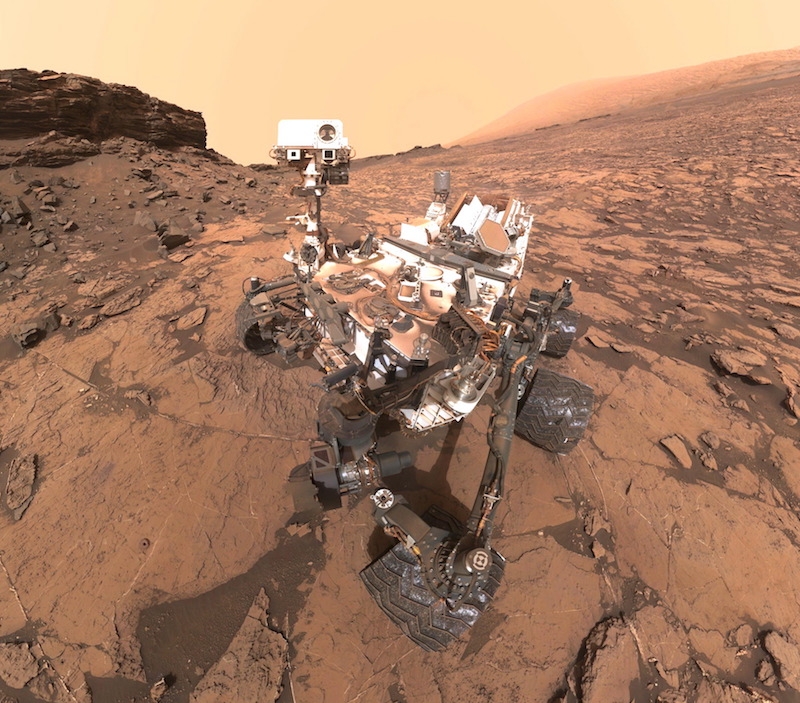
 OPG says Pu-238 powers various space exploration projects, like the Mars rover Curiosity. This selfie of Curiosity shows the vehicle at the “Quela” drilling location in the “Murray Buttes” area on lower Mount Sharp. Photo courtesy NASA.
OPG says Pu-238 powers various space exploration projects, like the Mars rover Curiosity. This selfie of Curiosity shows the vehicle at the “Quela” drilling location in the “Murray Buttes” area on lower Mount Sharp. Photo courtesy NASA. March 2, 2017 – “This is a very exciting project,” said OPG’s president & CEO Jeff Lyash of the news that OPG and its venture arm, Canadian Nuclear Partners, are participating in a project to produce isotopes in support of deep space exploration.
Under the agreement, OPG will help create isotopes at the Darlington nuclear station east of Toronto to help power space probes.
“No pursuit pushes the boundaries of our scientific and technical limits like space travel. We are proud to have Ontario play a part, however small, in this most noble of human endeavours,” added Lyash.
According to OPG, Plutonium 238 (Pu-238) powers various deep-space exploration projects, including Voyagers 1 and 2 (both launched in 1977 and now in interstellar space), the Mars rover Curiosity, and the Mars 2020 Rover.
An isotope of plutonium, Pu-238 emits steady heat due to its natural radioactive decay. The heat generated decreases slowly in a predictable manner, and can be harnessed into electric energy aboard a spacecraft. In addition, the heat keeps scientific instruments warm enough to function in space.
OPG says it is seeking approvals to have isotope production begin by 2020.
“This project is just another example of the broad economic and societal benefits of nuclear power,” added Lyash. “It provides clean, low-cost power; it helps in the medical world and, if successful, can be a part of the next generation of space travel.”
PHOTO: OPG says Pu-238 powers various space exploration projects, like the Mars rover Curiosity. This selfie of Curiosity shows the vehicle at the “Quela” drilling location in the “Murray Buttes” area on lower Mount Sharp. Photo courtesy NASA.
Print this page